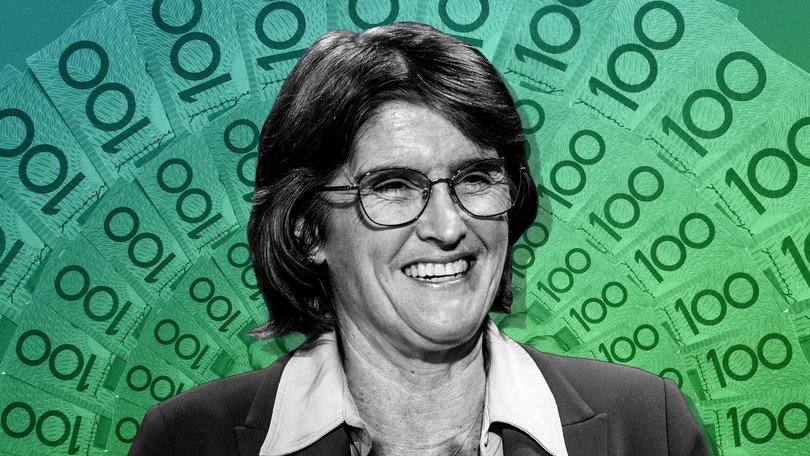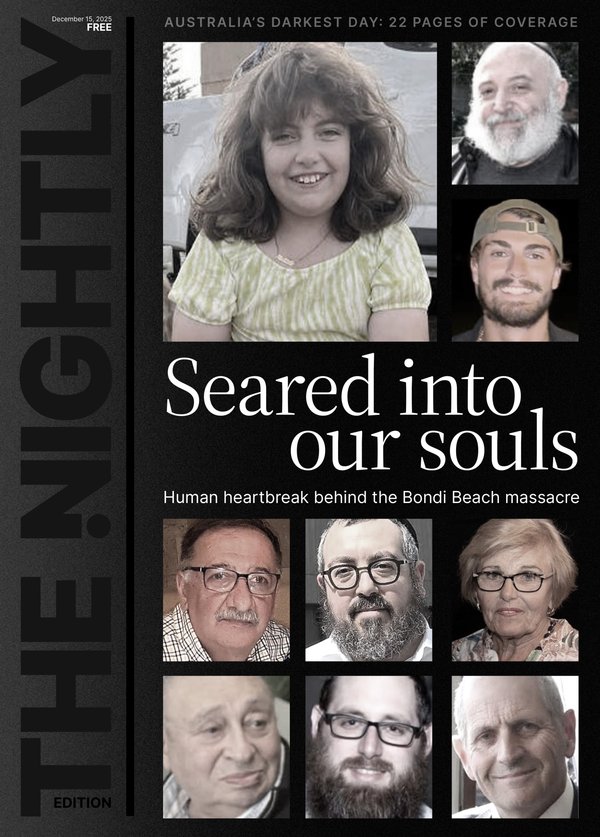Reserve Bank governor Michele Bullock earns almost twice the PM

The head of Australia’s central bank was paid almost $1.2 million last financial year, more than three times her US counterpart and almost twice as much as Anthony Albanese.
Reserve Bank of Australia governor Michele Bullock received a base salary of $987,132, which increased to $1,195,275 when the central bank’s generous superannuation scheme and other allowances were included, according to its annual report.
For presiding over official interest rates and helping supervise the financial system, Ms Bullock received less than a fifth of Commonwealth Bank chief executive Matt Comyn’s $7.018 million pay. Unlike her commercial counterparts, she has a fixed contract that runs until 2030 and cannot be fired.
Sign up to The Nightly's newsletters.
Get the first look at the digital newspaper, curated daily stories and breaking headlines delivered to your inbox.
By continuing you agree to our Terms and Privacy Policy.Appointed by a Labor government, she oversaw cuts to interest rates in February, May and August after two years of elevated rates designed to lower spending and push up employment.
She has largely declared victory over inflation. Underlying and headline inflation were within the Reserve Bank’s 2 to 3 per cent target in the three months ended June 30, while unemployment in August was at 4.2 per cent.
Other public servants are paid more, but only for running commercial-like government businesses.
NBN Co’s former chief executive Stephen Rue, who now runs embattled telco Optus, received a base salary of $2.019 million and a total remuneration package of $2.9 million at the agency charged with installing the National Broadband Network.
Snowy Hydro chief executive Dennis Barnes was paid a base salary of $1.7 million last financial year, for a total remuneration of $2.061 million.
Ms Bullock’s British-born deputy, Andrew Hauser, was paid $879,714. Several assistant governors were paid $694,370 to $769,821. Part-time members of monetary policy board received $34,280 for voting on interest rate decisions.
The Prime Minister is paid $622,102. Jerome Powell, as US Federal Reserve chairman, earns $US190,000 with Congress setting his pay instead of an independent tribunal like Australia. In Australian dollars, his $290,000 package is less than a third of Ms Bullock’s.
Economist Peter Tulip, the Reserve Bank’s research manager from 2011 to 2020, said Ms Bullock would keep her job if there was an embarrassing scandal on her watch, while the head of a major commercial bank would most likely be replaced.
“Several leaders of big four banks have effectively got the sack in recent years,” he told The Nightly.
“The central bank governor doesn’t have that kind of pressure. They’ve got a lot of job security and independence.
“So, they cop a lot of criticism and more so than business leaders do and so the job requires a thick skin, but it also comes with a substantial amount of independence.”
Ms Bullock cannot sack any of the other eight members of the central bank’s monetary policy board if they publicly contradict her on interest rate decisions, while the Prime Minister can send a Cabinet minister to the backbench for speaking out against government policy.
“Given the competitive nature of politics, most Cabinet ministers would see it as not in their interests,” Dr Tulip said.
Dr Tulip, who is now the chief economist with the Centre for Independent Studies think tank, said less pay for Mr Powell did not justify slashing Ms Bullock’s pay, given central bank bosses could look forward to lucrative corporate careers later.
“A lot of people would regard a low salary such as Jerome Powell gets as an insult but he’s got 400 PhDs working to him so that probably more than compensates, and you’ve got the status of being essentially in the top economic position in the world,” he said.
The RBA’s balance sheet in 2024-25 fell by about $10 billion as bonds purchased during the COVID pandemic began to mature, with $404 billion worth of assets as of June 30.
The Reserve Bank held $61 billion worth of foreign currency, including $7.7 billion in US dollars and $37.4 billion in Japanese yen, and $12.4 billion in gold.
A review into the central bank led to the establishment of a nine-member monetary policy board with fixed terms. These independent board members have scope to publicity criticise interest rate decisions, which isn’t afforded to Cabinet ministers.
“It’s implied by the RBA review that they should do this. That their board members are expected to give a speech every year setting out their views on monetary policy,” Dr Tulip said.

